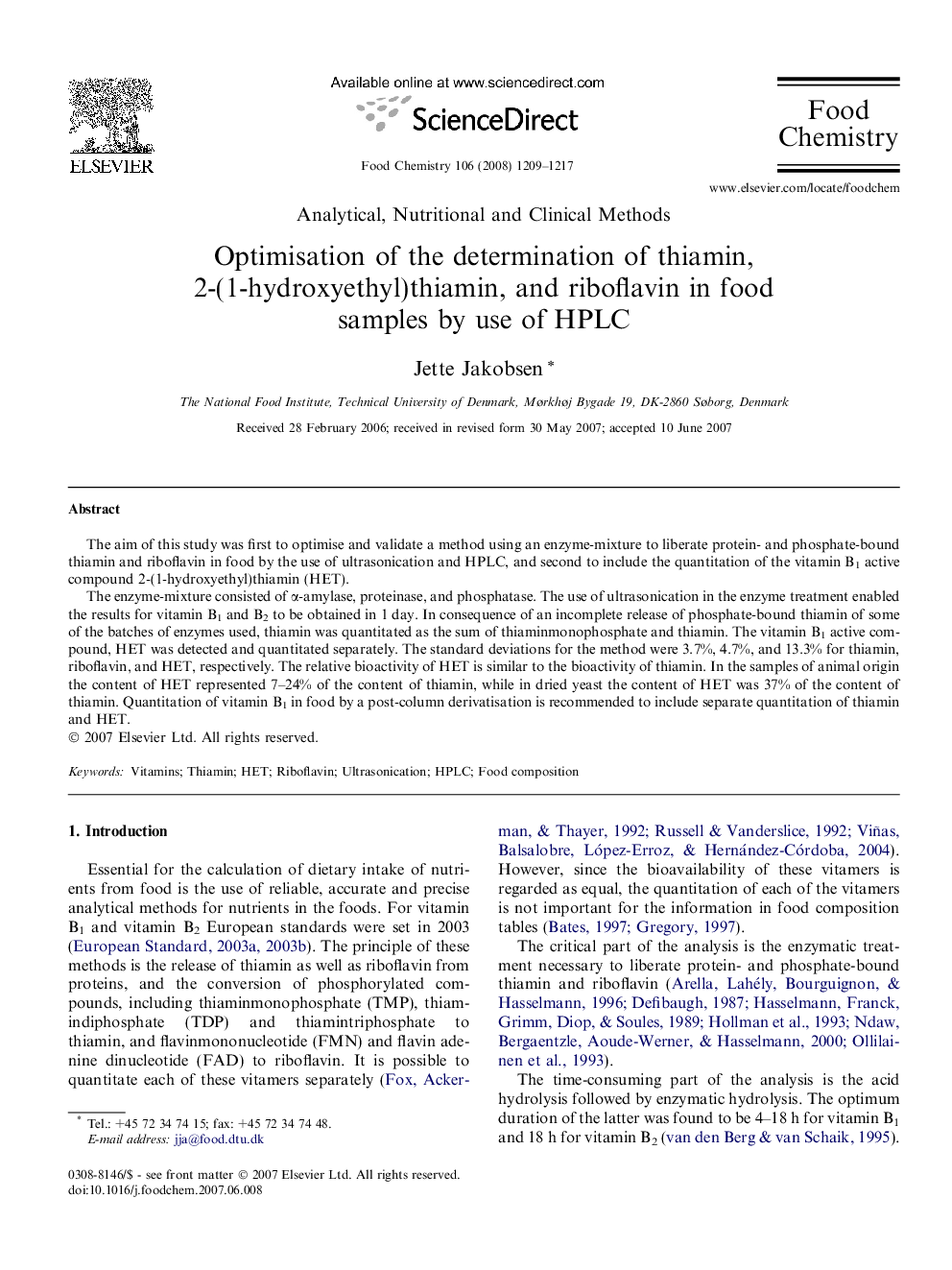| Article ID | Journal | Published Year | Pages | File Type |
|---|---|---|---|---|
| 1189614 | Food Chemistry | 2008 | 9 Pages |
The aim of this study was first to optimise and validate a method using an enzyme-mixture to liberate protein- and phosphate-bound thiamin and riboflavin in food by the use of ultrasonication and HPLC, and second to include the quantitation of the vitamin B1 active compound 2-(1-hydroxyethyl)thiamin (HET).The enzyme-mixture consisted of α-amylase, proteinase, and phosphatase. The use of ultrasonication in the enzyme treatment enabled the results for vitamin B1 and B2 to be obtained in 1 day. In consequence of an incomplete release of phosphate-bound thiamin of some of the batches of enzymes used, thiamin was quantitated as the sum of thiaminmonophosphate and thiamin. The vitamin B1 active compound, HET was detected and quantitated separately. The standard deviations for the method were 3.7%, 4.7%, and 13.3% for thiamin, riboflavin, and HET, respectively. The relative bioactivity of HET is similar to the bioactivity of thiamin. In the samples of animal origin the content of HET represented 7–24% of the content of thiamin, while in dried yeast the content of HET was 37% of the content of thiamin. Quantitation of vitamin B1 in food by a post-column derivatisation is recommended to include separate quantitation of thiamin and HET.
